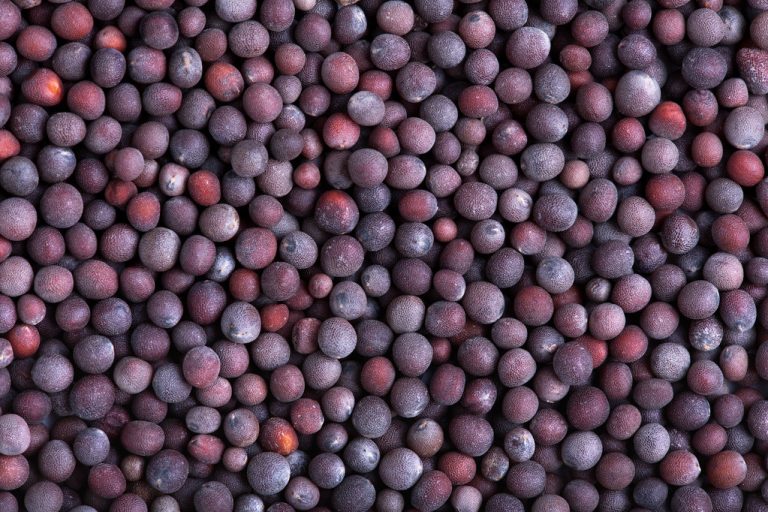Mustard seeds are a popular condiment in many cultures. No wonder: the small seeds are full of aroma, can be processed in many ways and are also healthy.
Mustard seeds have a long tradition as a spice. The parable of the mustard seed is found in the Bible. The mustard plant originally comes from Asia and southern Europe. However, the plant was already widespread throughout Europe as a spice and medicinal plant in antiquity.
Mustard seed comes in three different colors:
yellow mustard seeds
brown mustard seeds
black mustard seeds
Mustard seeds are particularly popular in Indian cuisine. But the seeds are also used in many different ways in other cuisines around the world. You will learn more about the individual strains and their characteristics later in this article.

This is how mustard seeds work
Mustard seeds play a particularly important role in Ayurvedic nutrition and Ayurvedic medicine. The seeds are rich in protein, fiber, vitamins and minerals. The most important include:
Vitamin B3: important for energy metabolism and nutrient utilization)
Vitamin E (controls the gonads and protects the cells from free radicals)
Calcium (strengthens bones and teeth)
Magnesium (necessary for muscle building)
Selenium (supports the immune system)
Iron (responsible for transporting oxygen in the blood)
In addition, mustard seeds are full of other valuable ingredients for your health. These include, among other things:
essential oils
mustard glycosides
antioxidants
According to studies, mustard seeds have the following healthy properties:
anti-inflammatory
anti-cancerous
antioxidant
promote blood circulation
stimulate digestion
lower blood sugar levels
lower cholesterol levels
have a pain-relieving effect on arthritis and other joint problems
The mustard seeds are either applied as a paste, absorbed through digestion or used as mustard oil.
Mustard seeds in the kitchen
In the kitchen, mustard seeds are valued above all for their fine, nutty aroma and intense spiciness. The seeds themselves are not spicy at all. Only when the grains are ground or chewed and the glycoside contained comes into contact with water does the strong sharpness develop.
The longer you heat mustard seeds, the more the seeds lose their sharpness. If you are a friend of spicy heat, you should only add the finely ground seeds towards the end of the cooking process. If you prefer the mild, nutty note of mustard, it is advisable to toast the seeds at the beginning.
When cooking, you can basically distinguish between three types with different properties:
Yellow Mustard Seeds:
Yellow mustard seed is also called white mustard. The seeds are significantly larger than those of other varieties.
Yellow mustard seeds are used as a basis for various types of mustard and for spice pastes. You can make your own mustard from the ground grains.
More recipe ideas:
FIG mustard
Mustard sauce
Honey mustard dressing
Brown Mustard Seeds:
Brown mustard grains are a common ingredient, especially in Indian cuisine. Here they are usually crushed in a mortar and then fried directly before preparation.
Brown mustard seeds are often found in curry or dhal dishes, for example.
Brown mustard seeds also go well with fruity chutneys.
Black Mustard Seeds:
Although the plant of the dark mustard seeds grows taller than its lighter relatives, the seeds themselves are significantly smaller. In addition, the grains are much sharper in comparison.
Black mustard seeds serve as the basis for the world-famous Dijon mustard.
The dark mustard seed is suitable for mustard cucumbers or other pickled vegetables.
You can also mix different mustard seeds and refine your salads or soups with them.

